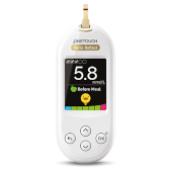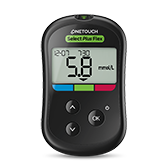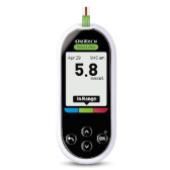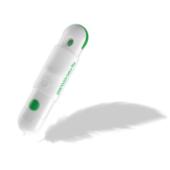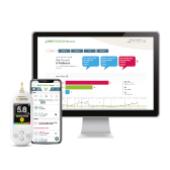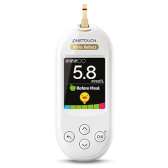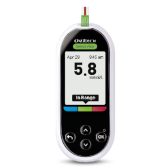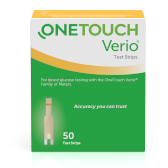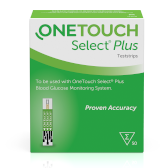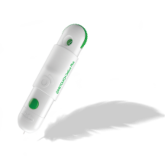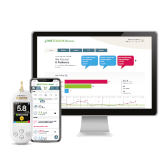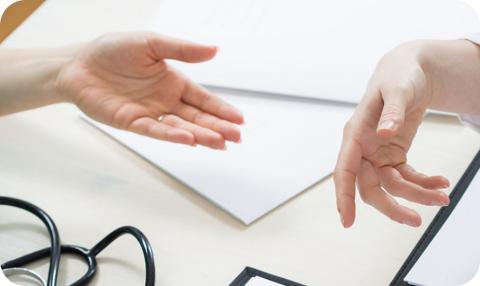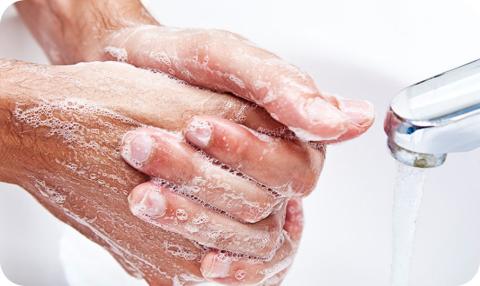Hyperglycemia: Signs to Look Out for and How to Take Action

Hyperglycemia, or high blood sugar, is an excess of glucose in the bloodstream. Even when you do your best to manage your blood glucose, you may still sometimes experience highs. These highs can be dangerous if you don’t act quickly. Learn to recognize the signs of hyperglycemia (when your fasting blood glucose is above 10 mmol/L) and act. Some people who've had type 2 diabetes for a long time may not show any symptoms despite elevated blood sugar levels.
Recognize the symptoms
- Increased thirst
- Urinating more often than usual, especially during the night
- More tired than usual
- Blurred vision
- Headache
Try to figure out why it’s high
- Did you have a larger-than-usual meal or snack?
- Did you calculate your carbohydrate intake correctly?
- Did you not take enough insulin?
- Were you less physically active than usual?
- Are you sick?
Take action to lower your blood glucose to your target levels
Note: When initially discussing your diabetes care plan, ask your doctor how you should adjust your insulin when your blood glucose is high.
- Engage in at least 30 minutes of physical activity and drink plenty of water or other fluids while exercising to prevent dehydration.
- Retest your blood glucose to see if it has decreased.
- If it remains high for a few days, consult your healthcare team. Changes may be needed to your diabetes management plan.
If your blood glucose is very high (>13.3 mmol/L) or if you have the symptoms outlined below, check for ketones.
Ketoacidosis develops when your body doesn’t produce enough insulin, so it breaks down fats into ketones. Ketone levels can be measured with a simple urine test using ketone strips (similar to blood glucose test strips) purchased from a pharmacy.
Ketoacidosis is serious and dangerous and can lead to a diabetic coma. Ketoacidosis usually develops slowly, but when vomiting occurs, this life-threatening condition can develop in a few hours.
Get medical help right away if you notice these symptoms:
Early on:
- Thirst or a very dry mouth
- Frequent urination
- High blood glucose levels
- High levels of ketones in the urine
Later:
- Constantly feeling tired
- Dry or flushed skin
- Nausea, vomiting, or stomach pain
- Difficulty breathing
- Fruity-smelling breath
- A hard time paying attention, or feeling confused
Because you may need help from those around you, it may be helpful to:
- Wear a Medical ID bracelet to notify people of your condition
- Alert those close to you (friends, family, coaches) about symptoms to watch out for and what to do
- Be sure to share this list and information with your friends and family so they are informed and can help
- Keep a supply of ketone test strips at home
References:
Mayo Clinic. Hyperglycemia in Diabetes. https://www.mayoclinic.org/diseases-conditions/hyperglycemia/symptoms-causes/syc-20373631. Accessed August 8, 2019.
American Diabetes Association. DKA (Ketoacidosis & Ketones). http://www.diabetes.org/living-with-diabetes/complications/ketoacidosis-dka.html. Accessed August 8, 2019.
Healthline. Checking Ketone Levels. https://www.healthline.com/health/type-2-diabetes/facts-ketones#symptoms. Accessed August 19, 2019.
Related articles
US-OTB-1900033 (21-122)

